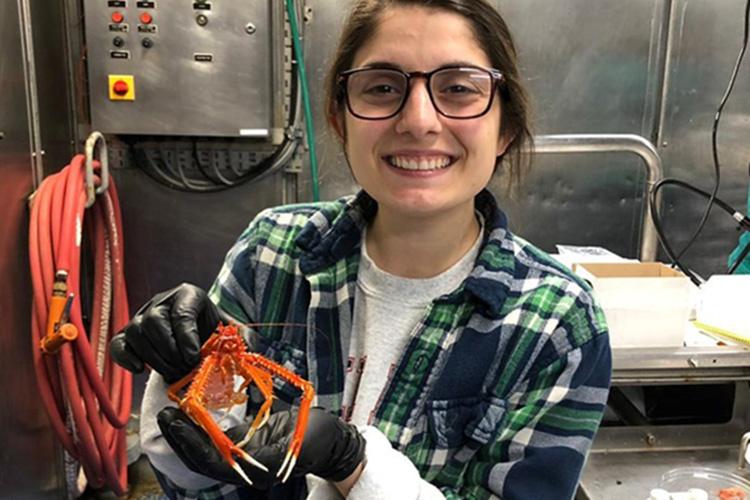Chief Scientist’s Weather Report: A squat lobster warning is in effect as a herd of barcoded squat lobsters will threaten the coast this evening.
I am a contracted lab tech for Dr. Cheryl Morrison of the U.S. Geological Survey doing DNA extraction and sequencing on marine invertebrates, specifically deep-sea corals and their associates. There are short sequences of DNA, known as barcoding genes, that are comparable across invertebrate taxa. They can be used to link individuals or populations across a wide geographic area, serve as an identification tool, and track evolutionary divergence or similarity among populations and species. We use them to understand the distribution and ecology of the deep-sea corals such as bubblegum, Primnoa, Paramuricea, and Lophelia, as well as the biodiversity within various coral habitats.

I was thrilled to be a part of the sample collection team, because it allowed me the chance to get a better understanding of the work that the Morrison lab does. While the genetics work in the lab is important, it’s easy to lose perspective when the samples coming through for processing are out of context. Being a part of the field team and seeing the animals both in-situ and in the lab made my work feel much more real. This cruise is my first time off-shore and it’s been a tremendous learning experience. I’ve enjoyed immersing myself in the live-feed of the ROPOS dives and discussing them with the very knowledgeable people around me.

As ROPOS traversed through Northeast Channel, we observed numerous squat lobsters living on cobbled bottoms between the rocks. Squat lobsters are of interest to the Morrison lab due to their known association with deep-sea corals. Despite being ubiquitous in many deep-sea habitats, their taxonomic relationships can be difficult to tease apart. The Morrison lab has a long-standing project with co-Chief Scientist Dr. Martha Nizinski to better understand squat lobster taxonomy, systematics, and life history. This project combines DNA sequencing data and taxonomic studies to achieve these goals. Being able to combine organismal level observations to the genetics makes me incredibly excited to get back in the lab to get some answers!
Veronica Salamone, U.S. Geological Survey Contractor
Aboard the NOAA Ship Henry B. Bigelow HB1903



